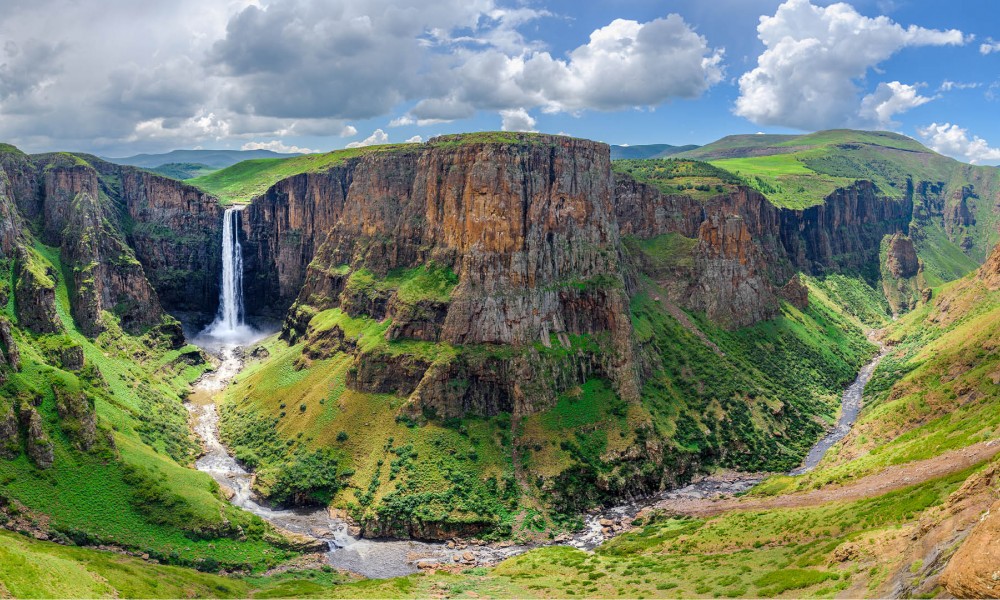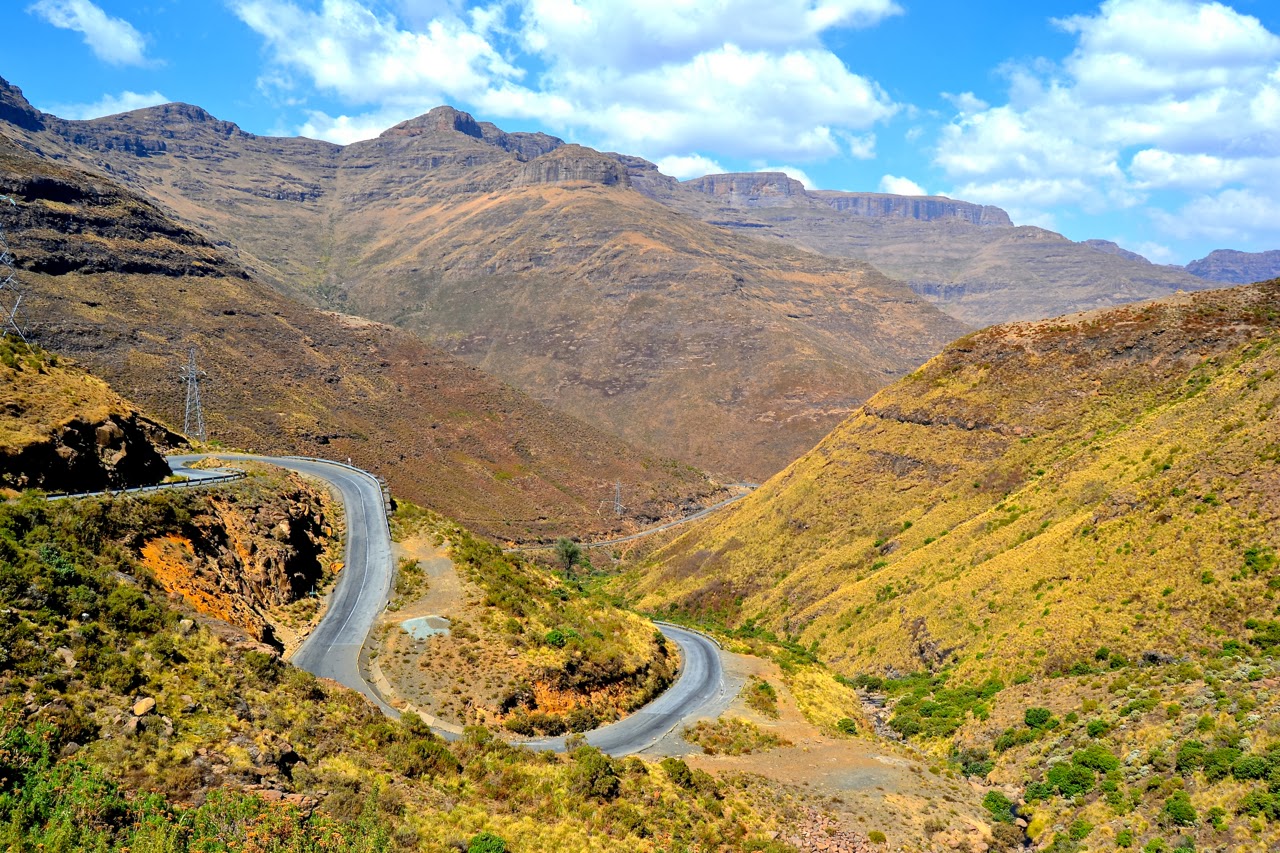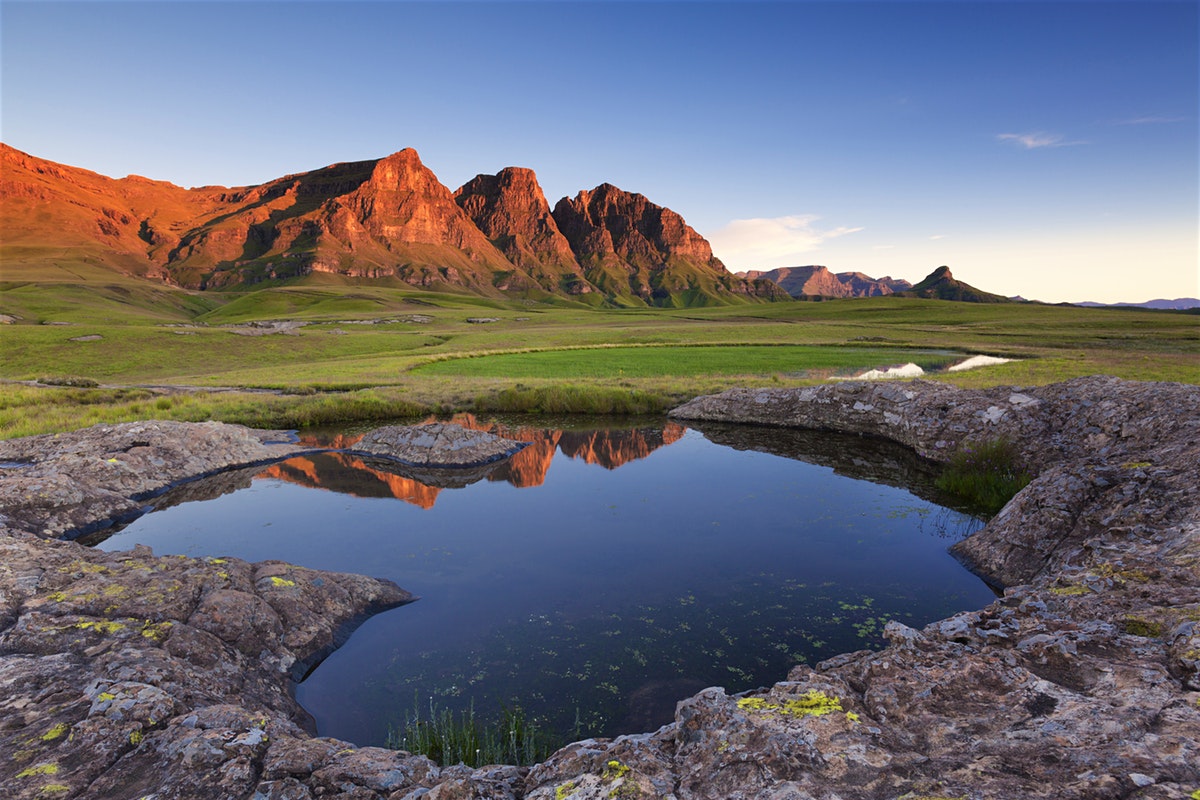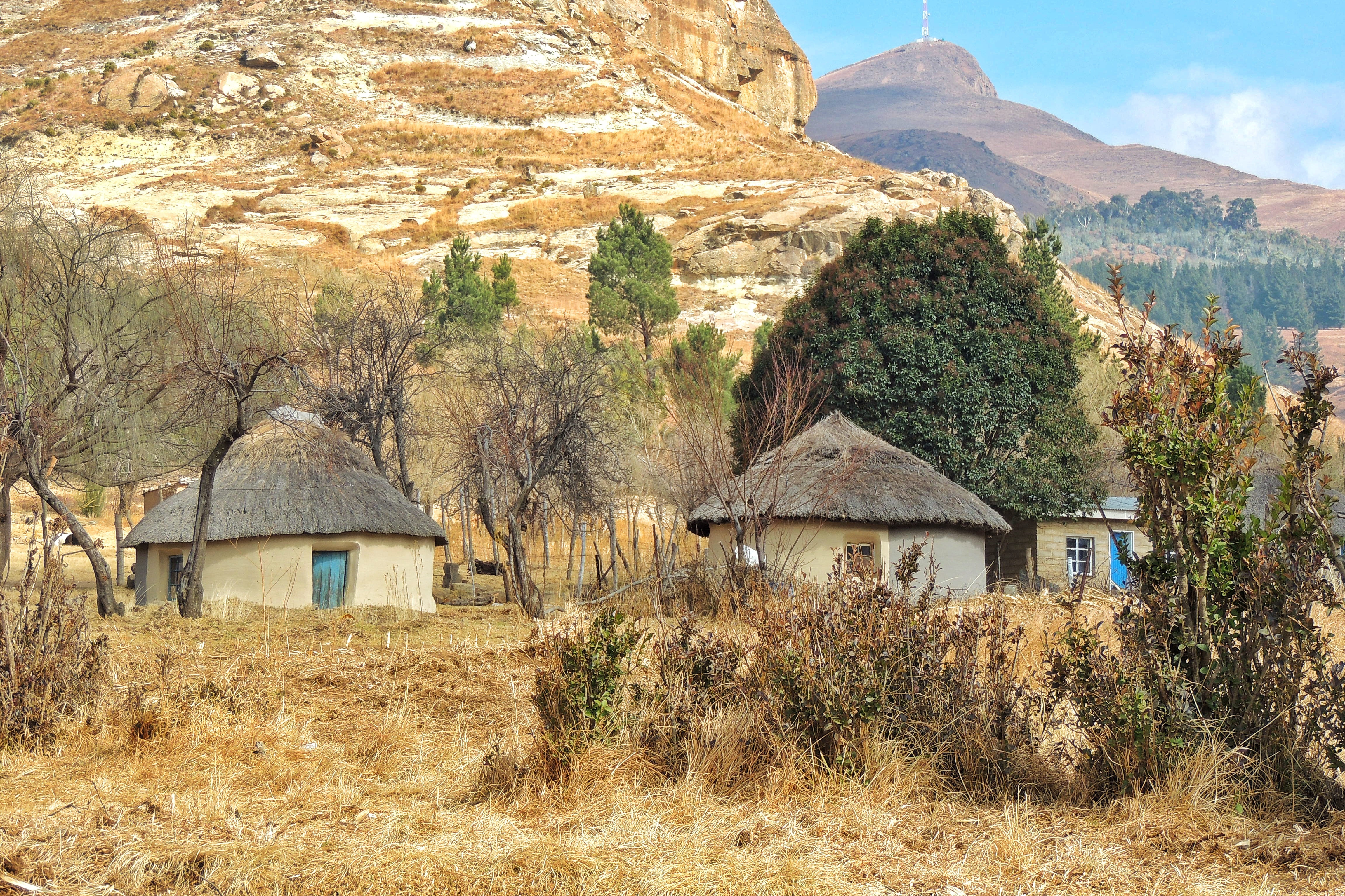10 facts about Lesotho

After the winter which is frosty enough (temperature could decrease to minus eighteen degrees) in September along with the blossoming peach trees spring comes. This is a gentle time for its attendance, so, we prepared ten interesting facts that could serve as the source of inspiration for travels this year.
The history of the state harkens back to approximately sixteenth century where it had been inhabited by its aboriginals, particularly, tribe basuto. At the beginning of nineteenth century the land plot encountered Boer displaced residents, then it appeared under authorities of English people. The independence came in 1966 along with the first flag, exactly stripes of blue, white, and green colors symbolizing water, prosperity and peace. In the centre the shield with weapon, such as spear and cudgel is located. However, in such a view the symbolic of the country could be visible only in the archives as to the celebration of forty-year sovereignty of Lesotho instead of shield and cudgel it was decided to place the depiction of headwear.
 Photo eejentravel.com
Photo eejentravel.com
Economic relations inside the state are still at the level of exchange in kind, especially it relates to the small villages. In each of such settlements there are nearly ten-twelve huts. They represent typical earthenware huts with strawy roofs without windows or doors, overlooking at the South. The commercial points above the houses are indicated with the flags of different colors, particularly, yellow color means that there beer is sold, red defines meat while white tells about bread. The capital Maseru is the city that is quite close to the modern civilization with the hotels, residential areas, university, and hospitals. The trade here found out international level, and the country is famous worldwide with the production of mohair, corn, and wheat.
‘Promise of Lesotho’ is the famous stone found out at one of the adamantine mines (there are two mines within the territory). It is a large yield with the weight of 121 gram, and it was divided into 26 beautiful diamonds. Certainly, it is not the only discovery as combined mines going in the deep soil up to hundreds of kilometers and due to the form resembling sink has a significant potential when it turns to the extraction of precious natural resources.
 Photo a.travel-assets.com
Photo a.travel-assets.com
Non-verbal communication for the local citizens has not less important sense than voice. For instance, one needs to give or take items holding them in both arms as it indicates onto the good intentions. Along with other African tribes, basuto transfer and save traditions and customs across the generations. In a public reflection they are expressed in different festivals. From those that sound familiar is musical ‘The Morija Arts&Cultural Festival’. It is accompanied with the popular motives of jazz, reggae, quaito under the sounds of leculolo (the type of flute), setolo-tolo, thomo, and others.
European clothes penetrated the wardrobe of citizens; however, national one is more than widespread. It represents blanket from wool by own production casted on the shoulders. The patterns priceless for the sight of local citizens are taken from the natural motives, in general, express ears of corn.
 Photo lonelyplanet.com
Photo lonelyplanet.com
Eco-tourism plays the key role within the territory of Lesotho. The nature prepared great excursions so as to distort attention from buildings and roads. Such a way of escaping will be national parks Bokong Nature Reserve andTs'ehlanyane National Park, mountain reservoir Katse Dam, river Malahang with stone gorge and waterfalls Maletsuniyan and Samonkong.
Read also: Wild, wild Africa. Famous national parks of the continent. Part 1 and Wild, wild Africa... Part 2
Open hearts deserve unexpected culinary combinations. They say, ‘they are able to swallow everything that is chewed’ when it goes about the preferences in the ration of local citizens. They see edible food in the most untypical, particularly, in fried meat from crocodile, steamed porcupine, or baked rhino under the pungent species. The cuisine of Lesotho is the cocktail from Asian and European combinations. Local interests, colonial epoch, and immigrants got in on the act. Particularly, French people grow vineyards, Indians opened curry, English people told about meat rolls, and puddings. As for the desert, it does not require efforts in the preparation as it needs mango, papaya, pineapple, or exotic litchee and marula.
Photo awaywithwords.com
For this country it is typical to have high mountains, and Dragon Mountains proved this fact. They received name due to the constantly dancing gauze at the peak of altitude as if we see the volumes of vapour from the smellers of dragon. Near the base it seems that here forest nymphs could hide that protect the dream of dragon. The hill carries historical value in the view of preserved rock painting of the ancient tribes and recollection about the battles with colonizers. Ones could savor not only observation here. The tourists will be waiting for the stanzas with the glasses of wine, rides, and games in golf.
The country has been participating in Olympic Games since 1972. The sportsmen have not received prize places; however, participation in such a large sport competition is the significant symbol at the map of the world.
 Photo eyeseeafrica.net
Photo eyeseeafrica.net
Lesotho is the only state in Africa there mountain resort is situated. It is located at the height of 300 meters including nearly six not too complicated races and it has been existing nearly from 1929. It is not the most breath-taking place for the connoisseurs of extreme activities; however, it allows to try the taste of exotics. On the slopes one may meet indigenous inhabitants and tourists, as well. Moreover, one should not forget to get interested in the motivation of the guides-students from Slovenia and Germany, particularly, what attracted them in African landscapes.
Cover photo travelandleisureindia.in





















